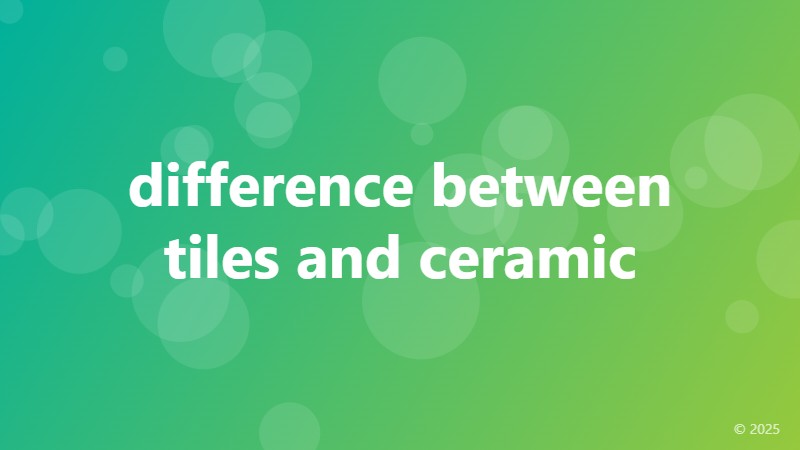difference between tiles and ceramic

Understanding the Basics: Tiles vs Ceramic
When it comes to choosing the perfect flooring or wall covering for your home, you may have come across the terms "tiles" and "ceramic" being used interchangeably. However, while they may seem similar, there are some key differences between the two that can affect the overall look, feel, and functionality of your space.
What are Tiles?
Tiles are a type of flooring or wall covering made from a variety of materials, including ceramic, porcelain, natural stone, glass, and metal. They can be glazed or unglazed, and come in a wide range of shapes, sizes, and designs. Tiles are often used to add visual appeal and protection to floors, walls, and countertops, and can be used in both residential and commercial settings.
What are Ceramics?
Ceramics, on the other hand, are a specific type of tile made from clay and other minerals, which are mixed with water and then fired at high temperatures to create a hard, non-metallic, and non-conductive material. Ceramics are often glazed to create a decorative and durable surface, and are commonly used for flooring, walls, and countertops in kitchens and bathrooms.
The Key Differences
So, what sets tiles and ceramics apart? Here are some of the main differences:
Material: While tiles can be made from a variety of materials, ceramics are made from clay and minerals.
Appearance: Tiles can have a wide range of appearances, from natural stone to metallic, while ceramics tend to have a more traditional, earthy look.
Durability: Both tiles and ceramics are durable, but ceramics are often more prone to chipping and cracking than other types of tiles.
Usage: Tiles can be used in a variety of settings, including outdoor areas, while ceramics are typically used in indoor spaces, such as kitchens and bathrooms.
Choosing the Right Option
When deciding between tiles and ceramics, consider the following factors:
Functionality: If you need a material that can withstand heavy foot traffic or extreme temperatures, tiles may be a better option.
Aesthetics: If you're looking for a traditional, earthy look, ceramics may be the way to go.
Budget: Ceramics tend to be more affordable than some types of tiles, such as natural stone or metal.
By understanding the differences between tiles and ceramics, you can make an informed decision about which material is best for your next project.